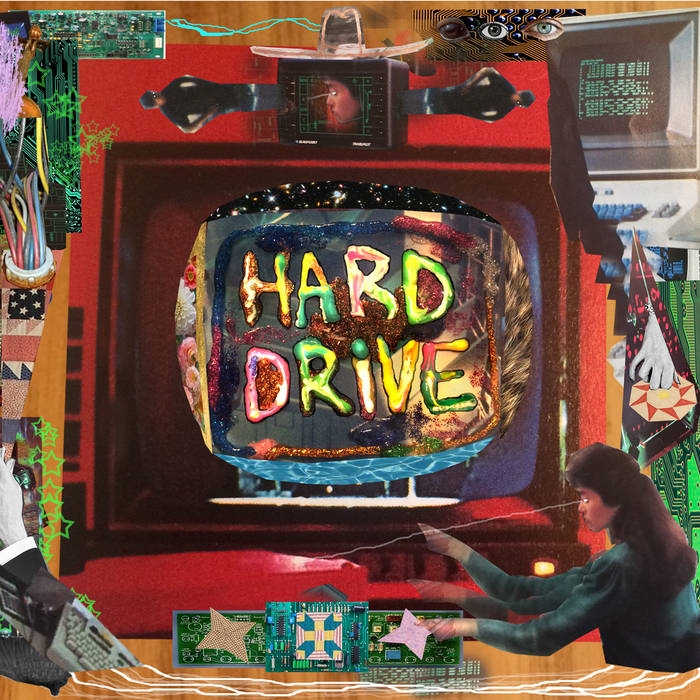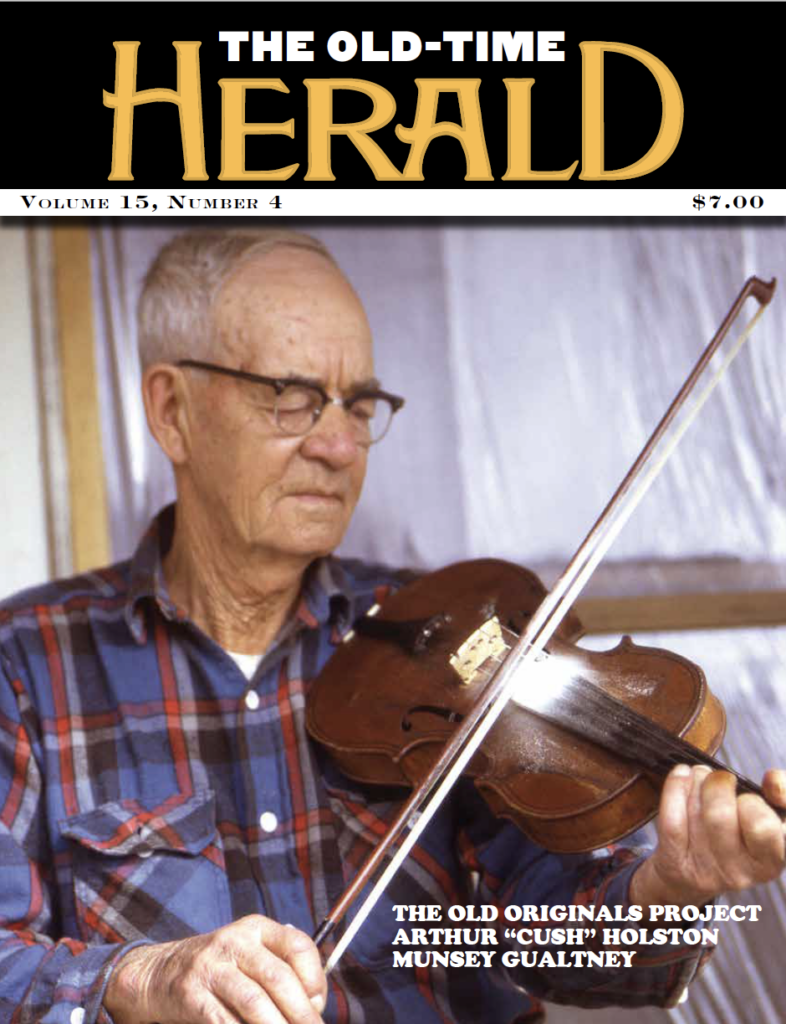“Hard Drive is a hard-driving aural modern traditional old time authentic millennial bluegrass collective made up of Tatiana Hargreaves, Aaron Tacke, Sonya Badigian, and Nokosee Fields.” The band’s succinct description of themselves provides a choice entrée into a survey of their 2019 self-released recording. It is a solid record and well worth seeking out if you want to get a sense of what younger folks are doing with the music here in the first quarter of the 21st century.
Random Access Mash lives up to its name as a mashup of a wide array of tunes, songs, sources, and outlooks that fit comfortably in the contemporary and traditional old-time and bluegrass scenes. Though this review appears in the Old Time Herald, R.A.M. is, no doubt, a bluegrass recording. Despite the occasional view that bluegrass and old-time music are like oil and water, the genres are closely linked and old-time music played a significant role in the foundation of most first-generation bluegrass musicians. As bluegrass grew in popularity, the genre provided its own inspiration and the significance of old-time began to wane.
There have been groups such as the New Lost City Ramblers, Dry Branch Fire Squad, Hazel Dickens and Alice Gerrard, the Strange Creek Singers, Jody Stecher and Kate Brislin, and others, who have come up with innovative ways to blend the genres from within the old-time umbrella. Hard Drive manages to combine their sources in such a way that they sound like a bluegrass band that is creating a setlist from pre-1940 sources rather than covering the Stanley Brothers or the Lonesome River Band. In that, they are in leagues with groups such as the Nashville Bluegrass Band, an outfit that not only plays Bill Monroe tunes but includes gospel, blues, and traditional fiddle tunes into their repertoire. (NBB and Hard Drive both have good recordings of the standard sacred number, “Gospel Plow.”) One could make a case that if you really wanted to create a “traditional” bluegrass band, your best approach would be to go to the sounds, sources, and styles that provided foundations and inspiration for early bluegrass.
Hard Drive has done a mighty fine job of collecting pre-WWII songs and tunes that work well in a bluegrass band setting. Their recording includes pieces from the East Texas Serenaders (“Combination Rag”), Bob Wills, Mississippi Mudsteppers (“Alma Waltz”), and the Monroe Brothers (“Where is My Sailor Boy”) that evoke their original recordings while sitting comfortably as bluegrass pieces. Music from bluegrass pioneers such as Bill Monroe (“Goin’ Up Caney”), Kenny Baker (“Brandywine”), and the Osborne Brothers, also find a home in the collection. As a collective, Hard Drive has the chops to take the music on and do it justice. They are all very fine players, which is a foundational requirement to play bluegrass with authority. Additionally, as individuals and as a group, they have a solid rhythmic feel for bluegrass. This can be a sticking point for some who try to cross genres. As a self-defined collective, the band sounds like a unit rather than a hotshot leader with a bunch of hired guns as side musicians. Tatiana Hargreaves provides the lead instrumentation that is hot but not overwhelming. Aaron Tacke’s excellent open banjo rolls evoke the playing of progressive/traditional/bluegrass/old-time picker Don Stover. Bass player Nokosee Fields does a solid job on the upright playing with a good bluegrass feel, as well as with the bowing heard on “Alma Waltz” and “Combination Rag.” Rhythm guitarist Sonya Badigian anchors the proceedings with her first-rate playing. Badigian and Hargreaves provide soulful, flat-affect singing that evokes the Carter Family with an obvious Hazel and Alice influence. Laying back and playing or singing it straight is not an easy feat in our post-Mariah Carey world.
All that said, there is a little more going on here than just a handful of young folks playing tunes. Bill Monroe was a genius singer, songwriter, instrumentalist, and band leader but he was also a world-class eccentric. The old-time and bluegrass music world is full of quirky characters and understated humor has long tradition in the revival since the ’50s, as have surrealists and avant garde musicians such as Henry Flynt, the influential Holy Modal Rounders and more recent groups such as the Horseflies. It is not clear what of the left-of-center aspects of the recording are absurdist or humorous. I’ll leave that to the listener to make that call. The package, with design by fiddler and artist Sally Jablonsky, looks like it was done in 1989 at a Kinko’s paste-up table in a classic indie poster style. The recording itself veers off into the ether at multiple points with dial-up buzz, Jake Lowe’s Casio Cowboy interlude, and New Age-style guided meditations to open and close the recording; and the “RCA Era Bill Monroe Meets The Horseflies” version of Katy Hill needs to be heard widely. All that said, having no manifesto from the artists, you’ll have to make of it what you will. It is nice to see a group that has clearly spent some time listening to true-vine music take some risks, get creative, and poke some fingerpick-clad digits in our eyes. Peculiar IS traditional. Despite the title, Random Access Mash, is not mashy at all, and though there is some random in there, the music and the design make a coherent package. In the end, it is a fairly earnest, straight-ahead, traditional offering of bluegrass and old-time music that should appeal to the hard-shell traditionalists as well as those who are out in front, leaning into the wind.


Leave a Reply